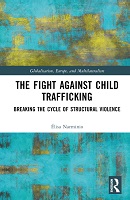Chapter 3 The apparatus of child protection
Proposal review
“Letting die” the trafficking victims
Abstract
The purpose of the present chapter is to initiate the analysis of the child trafficking apparatus through the examination of a paradox pertaining to the protection of children: the simultaneous acceptance of a universal norm of child protection, and the frequent vulnerabilisation of trafficked children who have been taken into care. This discrepancy raises a set of interrogations about the politics of “making live” or “letting die” (Foucault), and the clashes that shape the manner in which the issue is settled for identified trafficking victims. Drawing on Foucaultian analyses of biopower, Chapter 3 shows the internal tension between “make live” objectives and “let die” practices unfolding in the global protection apparatus and its manifestations in member states of ASEAN and the EU. Through a set of solid data collected through fieldwork and interviews, it argues that the protection apparatus deviates towards unintended consequences or biopolitics of selection, resulting in non-protection mechanisms for children identified as trafficking victims. The biopolitics of the child protection apparatus, where trafficking victims are concerned, is analysed along the lines of their politics of selection; the material, psychological and symbolic liminal spaces it produces; and the fabrics – that is, the mechanisms –, as well as the fabric –namely the intrinsic structure of the protection apparatus – that amplify the initial vulnerability of children.
Keywords
child trafficking; human trafficking; trafficking; anti-trafficking policies; EU-ASEAN; ASEAN; Human Rights; governanceDOI
10.4324/9781003309031-6ISBN
9781032312804, 9781032312934, 9781003309031Publisher
Taylor & FrancisPublisher website
https://taylorandfrancis.com/Publication date and place
2023Grantor
Imprint
RoutledgeClassification
Politics and government
Human rights, civil rights
Family law: children
International law


 Download
Download